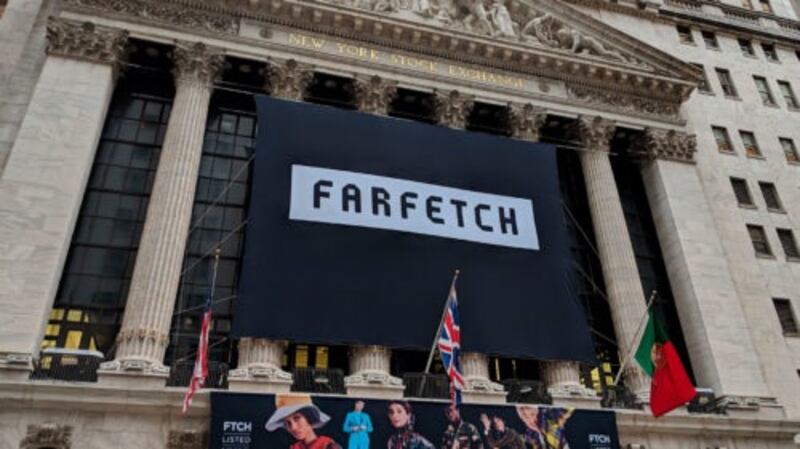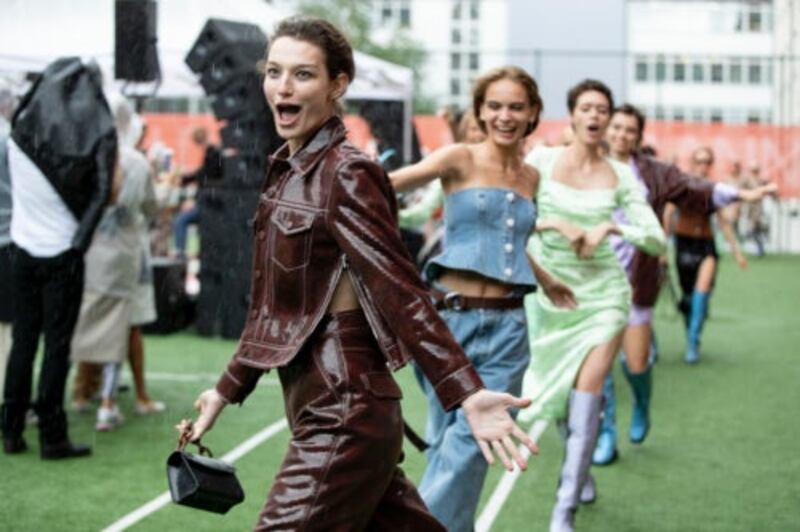
The Business of Fashion
Agenda-setting intelligence, analysis and advice for the global fashion community.

Agenda-setting intelligence, analysis and advice for the global fashion community.

THE CHEAT SHEET
Farfetch's Pandemic Bounce

Farfetch reports second-quarter results this week | Source: Shutterstock
The Bottom Line: Farfetch has shown it can grow sales — now it needs to demonstrate it can turn a profit too.
ADVERTISEMENT
What's Next for Tapestry?

A Coach pop-up store | Source: Courtesy
Live Before a Studio Audience, It's Copenhagen Fashion Week

Models at Ganni's S/S 20 show in Copenhagen last August | Source: Yuliya Christensen/Getty Images
After the mostly digital free-for-all in Paris and Milan last month, Copenhagen's schedule this week marks the first attempt to stage something akin to a conventional fashion week. The organisers are taking a "no rules approach" in terms of format. A handful of the roughly 30 brands showing are planning fully live shows with audiences. However, many others are expected to include some sort of physical component along with digital videos and live streams.
Denmark has largely reopened, making the logistics of holding fashion events easier than in locations where the pandemic is a bigger threat (though audiences for shows will be limited to a few dozen mostly local guests). The lack of international attendees is a major hurdle, only likely to be faced by designers in New York, London and beyond next month. Weak engagement with last month's digital shows is a sign that designers still need a critical mass of celebrities, buyers and editors in the room to generate buzz and make a convincing case for fashion week. The fight for attention is nothing new for Copenhagen, a regional fashion week that sometimes operates in the shadow of Paris, London and Milan. Organisers say they're planning for each designer to hold a Q&A, and a series of talks on sustainability, racism and other topics will take place alongside the shows.
The Bottom Line: In addition to showcasing Scandinavian designers, Copenhagen should provide a good test run for September, when major fashion capitals plan to host physical shows, presentations and events for the first time since the lockdowns.
SUNDAY READING
ADVERTISEMENT
Professional Exclusives You May Have Missed:
The Week Ahead wants to hear from you! Send tips, suggestions, complaints and compliments to brian.baskin@businessoffashion.com.
Was this BoF Professional email forwarded to you? Join BoF Professional to get access to the exclusive insight and analysis that keeps you ahead of the competition. Subscribe to BoF Professional here.
Nordstrom, Tod’s and L’Occitane are all pushing for privatisation. Ultimately, their fate will not be determined by whether they are under the scrutiny of public investors.
The company is in talks with potential investors after filing for insolvency in Europe and closing its US stores. Insiders say efforts to restore the brand to its 1980s heyday clashed with its owners’ desire to quickly juice sales in order to attract a buyer.
The humble trainer, once the reserve of football fans, Britpop kids and the odd skateboarder, has become as ubiquitous as battered Converse All Stars in the 00s indie sleaze years.
Manhattanites had little love for the $25 billion megaproject when it opened five years ago (the pandemic lockdowns didn't help, either). But a constantly shifting mix of stores, restaurants and experiences is now drawing large numbers of both locals and tourists.